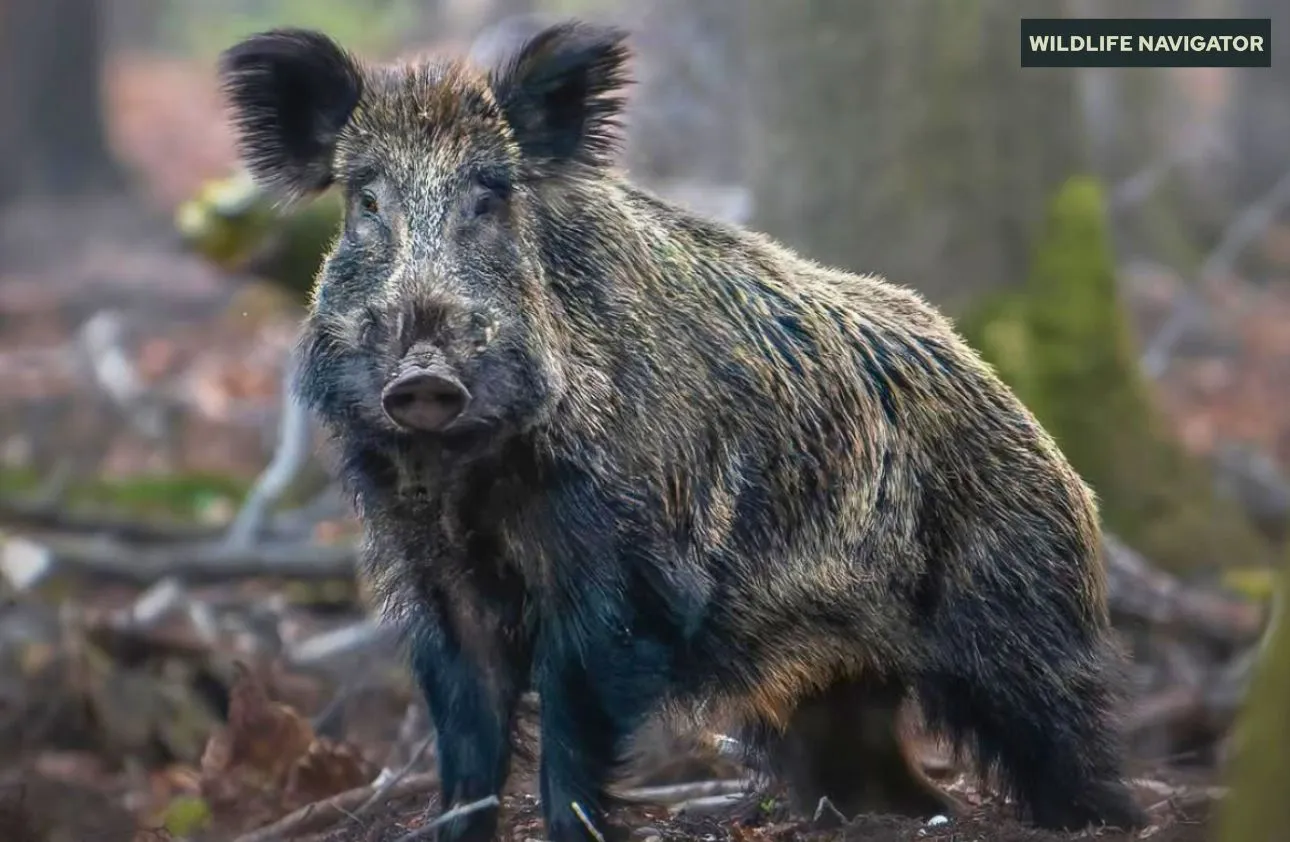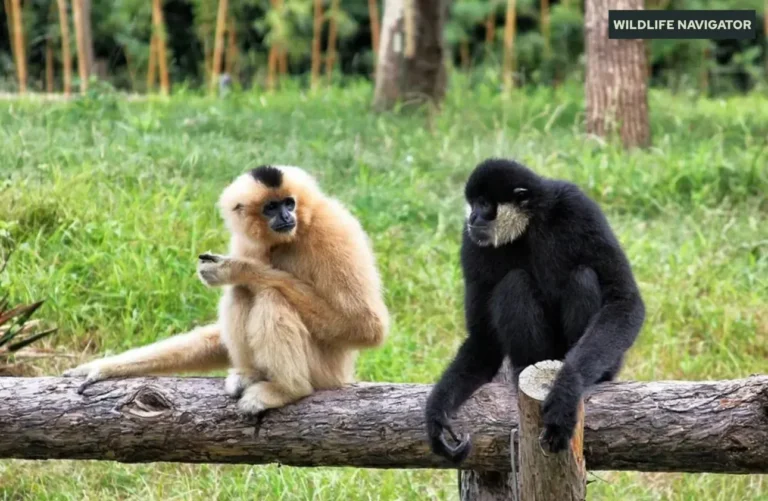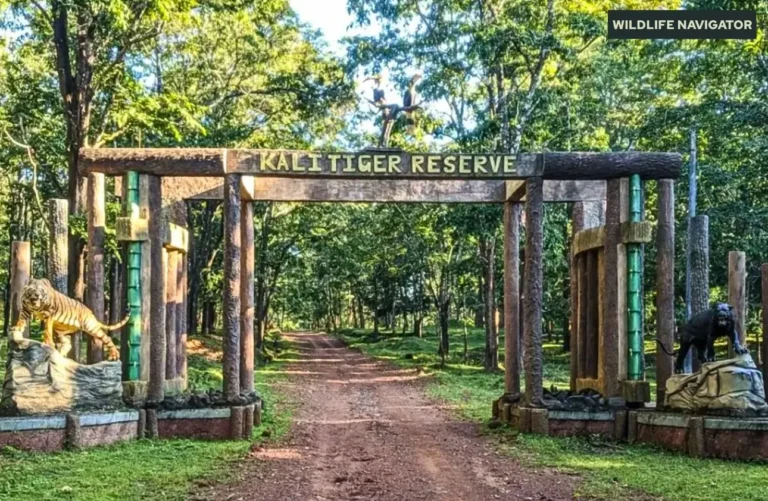Wild Boar (Sus scrofa): The Fearless Forager of the Wild

The wild boar (Sus scrofa), also known as the wild swine, Eurasian wild pig, or simply wild pig, is one of the most widespread and adaptable mammals on Earth. Belonging to the family Suidae, it is native to much of Europe, Asia, and North Africa, and has been introduced to regions such as North America, South America, and Australia, where it has established strong populations.
These sturdy, intelligent creatures are easily recognized by their muscular build, coarse bristly coats, and sharp, upward-curving tusks. Equipped with a keen sense of smell and remarkable adaptability, wild boars thrive in a variety of habitats — from snowy alpine forests and Mediterranean woodlands to tropical jungles and agricultural lands.
Their presence plays a crucial role in maintaining the balance of ecosystems. As omnivorous foragers, wild boars turn over soil while searching for roots and tubers, promoting nutrient cycling and aiding plant regeneration. This “natural ploughing” behavior supports healthy forest growth and creates microhabitats for smaller species.
Despite their ecological importance, wild boars are often misunderstood. Their tendency to raid crops and adapt to human-modified environments has earned them a mixed reputation — seen as both a forest engineer and, at times, a nuisance species. Yet, they remain a living symbol of resilience, embodying nature’s ability to survive and thrive amid constant change.
As we explore further, we’ll uncover the biology, behavior, ecological role, and conservation significance of this fascinating animal that bridges the worlds of wilderness and human civilization.
1. Classification & Species Overview
1.1 Scientific Classification
The wild boar belongs to the family Suidae, which includes pigs and their close relatives. Scientifically known as Sus scrofa, it was first described by Carl Linnaeus in 1758. It is the wild ancestor of the domestic pig (Sus scrofa domesticus), from which most modern pig breeds descend.
Scientific Classification:
- Kingdom: Animalia
- Phylum: Chordata
- Class: Mammalia
- Order: Artiodactyla
- Family: Suidae
- Genus: Sus
- Species: Sus scrofa
1.2 Subspecies and Global Distribution
The wild boar has one of the widest natural distributions among terrestrial mammals, native to Eurasia and North Africa. Over time, it has been introduced by humans to regions like the Americas, Australia, and several oceanic islands.
There are over 15 recognised subspecies of Sus scrofa, each adapted to its environment.
Some prominent ones include:
- Sus scrofa scrofa – European Wild Boar
- Sus scrofa cristatus – Indian Wild Boar
- Sus scrofa leucomystax – Japanese Wild Boar
- Sus scrofa vittatus – Indonesian Wild Boar
These subspecies vary in size, colour, and coat texture, reflecting the diversity of climates and landscapes they inhabit — from snowy forests to tropical jungles.
2. Physical Characteristics
The wild boar (Sus scrofa) is a robust and muscular animal, built for strength, endurance, and adaptability. Adult males, called boars, are larger and more heavily built than females (sows), often displaying prominent curved tusks — an iconic feature used for defense and digging.
Wild boars typically stand 55–110 cm (1.8–3.6 ft) at the shoulder and can weigh anywhere between 50–200 kg, depending on the subspecies and habitat. The European wild boar tends to be the largest, while those in Southeast Asia and Japan are smaller and lighter.
Their coarse coat varies in colour from dark brown to grey or black, often with a grizzled or reddish tinge. In colder regions, they grow a thicker winter coat, while tropical populations have shorter, sparser hair. Young piglets are easily recognisable by their light brown coats with pale stripes, which help camouflage them from predators — a pattern that fades as they grow older.
Beneath their rugged appearance lies remarkable intelligence and adaptability, traits that allow wild boars to survive in some of the world’s most diverse and challenging environments.
3. Habitat & Distribution
3.1 Global Range
The wild boar (Sus scrofa) has one of the widest natural distributions of any land mammal in the world. Native to Europe, Asia, and North Africa, it has also been introduced to regions such as North America, Australia, and South America, where it has adapted remarkably well. This global spread is a testament to the species’ incredible ability to survive in varied environments — from cold temperate forests and alpine slopes to tropical jungles and farmlands.
Across its range, wild boars can inhabit deciduous forests, grasslands, mangroves, and agricultural landscapes. They are highly adaptable animals, capable of thriving in both pristine forests and areas with human interference. In many parts of the world, they are also found close to human settlements, where they often scavenge on crops and garbage.
3.2 Wild Boars in India
In India, the Indian wild boar (Sus scrofa cristatus) is widely distributed, occupying diverse habitats across almost every state. They are found from the Himalayan foothills to the Western Ghats, and from the Thar Desert fringes to the Northeastern rainforests. Their adaptability allows them to survive in dry deciduous forests, moist evergreen forests, scrublands, and even agricultural fields.
They are a common sight in many of India’s National Parks and Tiger Reserves, including:
- Jim Corbett National Park (Uttarakhand)
- Ranthambore Tiger Reserve (Rajasthan)
- Kanha National Park (Madhya Pradesh)
- Bandhavgarh Tiger Reserve (Madhya Pradesh)
- Periyar Tiger Reserve (Kerala)
- Kaziranga National Park (Assam)
Wild boars are particularly drawn to areas with abundant water and dense undergrowth, which provide food and shelter. Their omnivorous diet allows them to exploit nearly any habitat, making them a vital yet often overlooked part of India’s forest ecosystems.
The wide range of the wild boar in India reflects both its ecological flexibility and its ability to coexist — sometimes uneasily — alongside human populations.
4. Diet & Feeding Habits
4.1 Omnivorous Diet
The wild boar is an omnivore with one of the most varied diets in the animal kingdom. It feeds on whatever the forest or farmland provides, making it a true opportunistic forager. Using its strong snout, it roots through soil and leaf litter in search of food — a behaviour known as “rooting.”
In the wild, its diet typically includes:
- Roots, tubers, and bulbs
- Fruits, berries, and seeds
- Insects, worms, and small reptiles
- Bird eggs, carrion, and occasionally small mammals
In agricultural areas, wild boars are often drawn to crops like maize, sugarcane, and paddy, leading to occasional conflicts with farmers. However, their diverse diet is a key reason behind their widespread success — they can survive in almost any habitat where food is available.
Young boars (piglets) depend mainly on fruits, roots, and insects, gradually learning to forage for themselves under the watchful eyes of their mothers. Their sharp sense of smell allows them to detect underground food like tubers and edible roots from remarkable distances.
4.2 Ecological Role
Though often seen as destructive due to their digging habits, wild boars play a vital ecological role in maintaining forest health. Their rooting behaviour helps in soil aeration, turning over leaf litter and promoting the decomposition of organic matter. This natural tilling enriches the soil and aids seed germination, helping plants to grow.
By consuming fallen fruits and excreting seeds elsewhere, wild boars also serve as important seed dispersers, contributing to the regeneration of forests. Additionally, their scavenging behaviour helps in the decomposition cycle, preventing the spread of disease by consuming carrion.
5. Behaviour & Lifestyle
5.1 Social Structure
The wild boar is a highly social animal, though its group dynamics vary with age, sex, and season. Typically, wild boars live in small family groups called sounders, which usually consist of adult females and their offspring. These family units are led by the dominant female, known as the matriarch, who guides the group in search of food, water, and safe resting spots.
Male wild boars, known as boars, tend to be solitary, especially as they mature. They usually leave the sounder at around one year of age and live alone, joining groups only during the breeding season. Despite being solitary, males are territorial and use scent marking and tusk rubbing to communicate their presence.
Wild boars maintain a strong hierarchical structure, and social interactions within sounders involve vocalisations, body gestures, and snout nudges. They are known to be quite intelligent, capable of learning from experience and adapting to new challenges — a trait that has allowed them to survive even in changing landscapes near human settlements.
5.2 Daily Activity & Movement
Wild boars are primarily nocturnal, becoming most active during the dawn and dusk hours. They spend the cooler parts of the day resting in shaded areas, mud wallows, or dense undergrowth to escape the heat and insects. Mud wallowing is not only a way to cool off but also serves as a natural skin care routine, helping them remove parasites and protect their skin from sunburn.
They are strong runners and excellent swimmers, capable of crossing rivers and streams with ease. Their nightly foraging excursions often cover several kilometres as they search for food. Wild boars have a keen sense of smell and hearing, which they rely on heavily for navigation and detecting predators such as tigers, leopards, and dholes.
In regions near human habitation, wild boars adapt quickly, feeding on crops, garbage, or leftovers, sometimes leading to human-wildlife conflict. However, in the wilderness, their alertness, intelligence, and group coordination make them remarkably difficult prey for even top predators.
6. Reproduction & Lifespan
6.1 Breeding Season and Gestation
The wild boar follows a fascinating and well-adapted reproductive cycle that ensures its survival across diverse climates. Although wild boars can breed throughout the year, the peak breeding season in India typically occurs between November and February, coinciding with cooler weather and abundant food availability after the monsoon.
During this period, males become highly territorial, often engaging in intense tusk fights to gain access to females. These encounters can be fierce, leaving visible scars or broken tusks. Once a dominant male mates with a female, he moves on, leaving the female to handle nesting and rearing duties.
The gestation period lasts around 115 to 120 days (roughly 4 months). Before giving birth, the female — or sow — constructs a nest-like structure made of dry leaves, grass, and twigs in a secluded area. This natural shelter provides warmth and protection to her newborns.
A typical litter consists of 4 to 6 piglets, though larger litters of up to 10 are not uncommon. The piglets are born with striped coats — a beautiful pattern of brown and yellow bands that helps them blend into the forest floor and avoid predators. These stripes fade as they grow older, usually disappearing by the age of six months.
6.2 Parental Care and Growth
The mother boar is extremely protective and nurturing. She nurses her piglets for nearly three months, after which they begin to forage alongside her, learning the ways of the wild. Sounders (female-led groups) often include multiple mothers who raise their young together, forming a communal safety net for the piglets.
6.3 Lifespan
In the wild, the wild boar’s lifespan ranges from 8 to 10 years, though in captivity they can live up to 15 years. Their life expectancy largely depends on predation pressure, habitat conditions, and human interference. Natural predators include tigers, leopards, and packs of dholes, but humans remain the greatest threat through hunting and habitat encroachment.
7. Role in Ecosystem
7.1 Importance in Forest Ecology
The wild boar plays a crucial role in maintaining the balance of forest ecosystems. By rooting through soil in search of food, it helps in aerating the ground, promoting nutrient cycling, and enhancing plant growth. This digging behaviour also assists in seed dispersal, allowing various forest plants and trees to regenerate naturally. As scavengers, wild boars consume carrion and decaying matter, preventing disease spread and aiding in forest hygiene.
7.2 Conflicts with Humans
However, their adaptability often brings them into conflict with humans, especially in agricultural areas. Wild boars are known to raid crops like maize, rice, and sugarcane, causing economic losses to farmers. In some regions, this has led to retaliatory killings or hunting pressures. Balancing their ecological role with human interests requires thoughtful management — including habitat protection, crop-guarding measures, and community awareness.
8. Conservation Status
8.1 IUCN Status
The wild boar (Sus scrofa) is currently listed as “Least Concern” on the IUCN Red List due to its wide distribution and large global population. Despite habitat loss and hunting in some regions, their adaptability and high reproductive rate help maintain stable numbers in the wild. Globally, wild boars are considered one of the most resilient mammals, capable of thriving in a range of environments from dense forests to farmlands.
8.2 Threats & Protection Measures
Threats include hunting, habitat fragmentation, and human-wildlife conflict. Conservation strategies focus on habitat preservation, sustainable management, and public awareness.
9. Fascinating Facts about Wild Boars
- Speedy Runners: Wild boars can run up to 40 km/h, helping them escape predators.
- Excellent Swimmers: They can cross rivers and water bodies with ease, even swimming for several kilometres.
- Ancestors of Domestic Pigs: All domestic pigs worldwide are descended from wild boars.
- Strong Sense of Smell: Their snout is highly sensitive, capable of detecting underground food like roots and insects.
- Social Animals: Females live in groups called sounders, while males are mostly solitary.
- Protective Mothers: Piglets are born with striped coats for camouflage, which fade as they grow.
- Forest Engineers: Their rooting behaviour helps aerate soil, disperse seeds, and aid forest regeneration.
- Omnivorous Diet: Wild boars eat plants, fruits, insects, small animals, and even carrion, making them vital for ecosystem balance.
FAQs About Wild Boars
Q1: Are wild boars dangerous to humans?
Wild boars are generally shy and avoid humans. However, they can become aggressive if cornered, threatened, or protecting their young. Caution is advised in areas where humans and wild boars coexist.
Q2: What is the difference between a wild boar and a domestic pig?
Wild boars are leaner, with longer snouts, coarse bristly hair, and tusks, whereas domestic pigs have been selectively bred for meat, showing varied body shapes, shorter snouts, and softer skin.
Q3: Where can you spot wild boars in India?
Wild boars are found across India, from the Himalayan foothills to the Western Ghats. Popular sightings are in National Parks and Tiger Reserves like Kanha, Bandhavgarh, Corbett, and Periyar.
Q4: How do wild boars impact agriculture?
Their foraging can damage crops like maize, sugarcane, and paddy, sometimes causing significant economic losses. This often brings them into conflict with farmers.
Q5: What role do wild boars play in the ecosystem?
They are crucial for soil aeration, seed dispersal, and scavenging, helping maintain healthy forests and supporting biodiversity.





